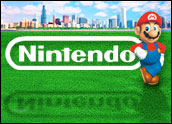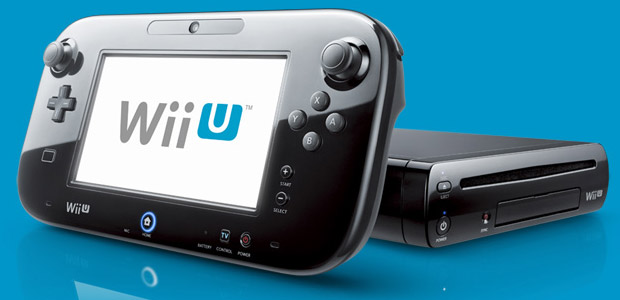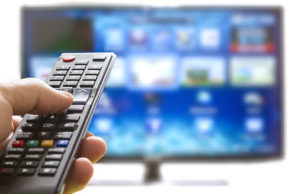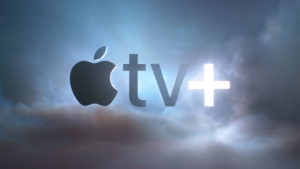
It’s been a long time since the video game faithful lined up for the midnight release of Nintendo’s Wii video game console, which arrived back in November of 2006. Now Nintendo no doubt hopes its next-generation console will enjoy the same level of anticipation as its game-changing Wii.

The system will debut in North America on Nov. 18, in Europe on Nov. 30 and in Japan on Dec. 8, Nintendo announced Thursday. The price for the U.S. market will be US$300 for a basic system, which offers 8 GB of storage; while the deluxe model that comes with infrared sensor bar and nunchuck controller will be $350.
Can the company score twice, especially as the Wii U price was announced at around $100 more than the Wii? Or is this simply a matter of inflation?
“The price is higher than we expected,” said N’Gai Croal, video game consultant with Hit Detection. “However, some industry insiders expected it to be higher.”
Nintendo did not respond to our request for further details.
High Score or High Price
Nintendo systems have typically been more affordable than those of rivals Sony and Microsoft, and a price that’s viewed as too steep could certainly hurt the Nintendo Wii U at launch and beyond. While consumers who own a current-generation Wii can reuse the infrared sensor and controllers, that amounts to a savings of only $50.
Many retailers may ease the pain with various bonus offerings.
“Having forecasted $300 as a launch price for the Wii U with possible bonus bundles, Nintendo’s announcement falls in line with what we expected,” said George T. Chronis, editor of DFC Dossier. “The biggest issue is that the $299 entry price point does not include a game and thus is effectively $350.”
“Naturally, all existing Wii games will play on the Wii U, so shipping with no game at $299 is not as bad as it sounds,” Chronis told the E-Commerce Times. “Nintendo is also launching with “New Super Mario Bros. U,” and likely wants to boost as many sales of its premier franchise as possible.”
More importantly, the faithful might not be as deterred by the price — and simply having a new Mario adventure to play is something fans aren’t likely to put a price on.
“There are enough early adopters that it will not be too much of an issue, as Nintendo can lower the price of the bundle with software next year,” added Chronis. “For now, those early adopters who will line up for the Wii U are not as price sensitive.”
Casual Crowd Sourcing
The other outstanding issue is whether Nintendo is looking to capture the casual game market again. While it clearly appears to be jumping on the tablet bandwagon with its unique Wii U controller, this might not draw in the same masses that the Wii attracted six years ago.
“Those drawn in for Wii Sports and Wii Fit might not respond as well this time,” Croal told the E-Commerce Times. “This new system isn’t being pitched around that motion control. It is really a tablet being pitched around a game system.”
Thus senior centers, cruise ships and other places that have adopted the Wii might not be as interested in the Wii U, stressed Croal. However, as an advanced gaming system, the touch controls could offer greater adoption going forward.
“To some measure, we’re likely to see some form of touch control on all three systems,” said Croal, who suggested that Sony’s and Microsoft’s next consoles will likely also see some level of touch integration.
“Touch will be more long lasting than gesture control,” emphasized Croal. “But gesture is still what drove the Wii’s strong sales.”
Game Economics
The high price point from Nintendo comes simply because the Wii U’s tablet interface is just more expensive than the motion controllers, and the company is likely passing those costs on to the user.
“The economics of making consoles, at least in the case of Nintendo, is to make a small profit at the start and to see it grow,” said Croal. “Microsoft and Sony typically have introduced hardware that requires them to take a loss at launch and grow from there. But either way, that business model is starting to struggle in the face of devices like smartphones and tablets that are sold at significant profit and updated on a regular basis.”
Moreover, while it could have been easy enough for Nintendo to build on — and even stick with the success of the Wii and its motion control functionality, the fact is that Sony and Microsoft have introduced their own respective motion control. Both companies produced add-on systems — Sony PlayStation Move and Microsoft Kinect for the Xbox 360 — just two years ago.
With competition in the gesture space, it is likely that Nintendo believed it needed to do something different to remain a step ahead.
“Nintendo is not drifting away from what made the Wii a success,” said Chronis. “It is just that more casual consumers are fickle, and there is a lot more competition, so it is harder to stand out. It is unlikely that the Wii U will be as successful as the Wii, for those reasons, but less success doesn’t necessarily translate into a complete failure either. It is just hard to match something as successful as the Wii, which set the bar at an extremely high level.”





















































Social Media
See all Social Media